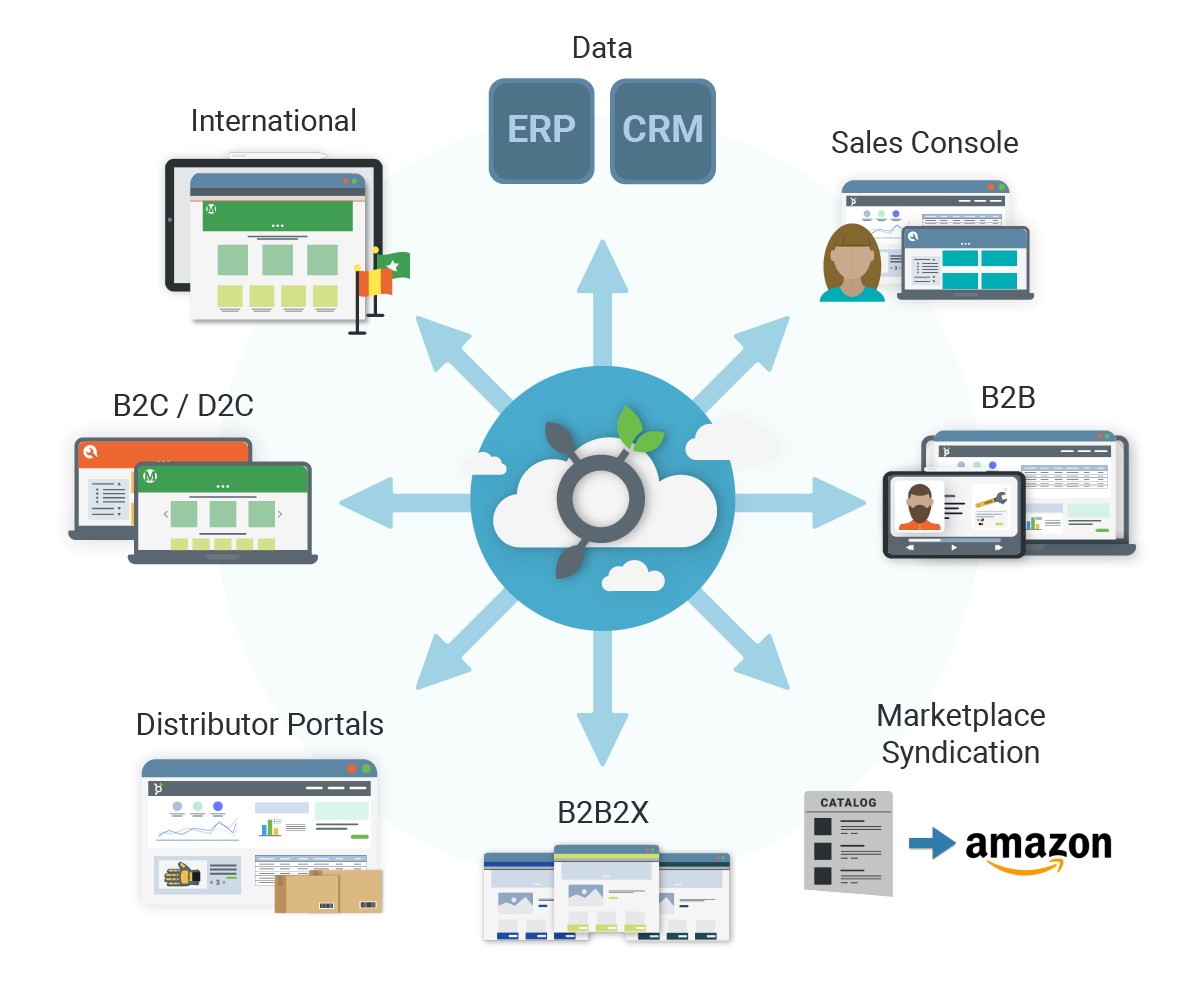Product Vision: The Center of Commerce
Znode announces centralized management of multi-channel ecommerce
As companies begin 2022, some truths remain about the current state of ecommerce and how commerce will be transacted in the future. Analyst reports and industry publications continue to research and validate that companies are dis-satisfied with current ecommerce platforms and the technology chosen to manage ecommerce. This fact, combined with the continued growth of digital channels inform the Znode product vision.
- 74% of businesses report concerns that their current platforms will not allow them to scale properly, and 78% say their existing solutions cannot support the agility of cross-channel order management. - Forrester Research
- 38% of B2B sellers sought to switch or upgrade ecommerce platforms in the past year. - Digital Commerce 360
A Vision Fed by A Belief, and Common Frustrations
This vision starts from a simple belief: all commerce is ecommerce. As time passes the amount of commerce activities touched and registered digitally continues to increase. This may be through one of many ecommerce business models from buy online and pick up in store or branch, to a marketplace, to punchout and EDI. Customers want a central account experience to manage all orders regardless of channel, and companies need a single-point platform to manage all commerce. This is true multi-channel ecommerce.
In many cases today, companies are challenged with managing commerce across multiple platforms. The story is pretty common and consistent. A company owns an outdated, monolithic platform for B2B portals or limited B2B ecommerce experiences. This was likely purchased in conjunction with a legacy ERP platform. In 2019, the pandemic hits and selling direct or opening new channels is a priority, but speed to market and flexibility of the existing platform are lacking. A new platform is purchased to open a new sales channel. M&A activity ushers in another legacy platform or two, and finally the need to sell through marketplaces adds a new layer of complexity.
This common scenario causes significant operational headaches:
- Customer service teams need to be trained and log into multiple platforms. This in itself is inefficient, and only adds to the complexity of turnover, training and employee satisfaction.
- Technology teams are burdened with managing multiple tech stacks including integrating multiple platforms to third-party systems such as ERPs and CRMs. That original monolithic B2B platform may integrate (somewhat) easily, but now all systems must.
- Product information is managed in multiple systems or multiple integrations with a product information management (PIM) system if one exists.
Instead of becoming a revenue opportunity, digital commerce just became a cost center.
Does commerce really need to be this difficult and cost this much?
Introducing The Center of Commerce
The vision is simple.
Customers want a single portal to manage orders, account history, invoices, returns, credits and more, regardless if the order is placed digitally or offline. This is self-serve and customer enablement on steroids, a buyer’s center of commerce. The financial industry has been a leader in this thinking as most major banks now offer an app that allows customers to manage their entire financial life from bill pay to retirement accounts. For companies ready to employ this vision, Znode’s Account Dashboard allows for multiple data sources, (online and offline) to be displayed and managed.
Companies need a single platform to manage all commerce. Costs of managing legacy systems and frustrations associated with multi-channel ecommerce cannot be easily solved in traditional ecommerce platforms which are built on 10+ year old architecture and data models originally designed for B2C commerce.
Znode’s well documented ability to easily manage catalogs and launch multi-store ecommerce is the foundation of the center of commerce. The vision is a reality as companies can easily manage B2B, B2C/D2C, B2B2X, marketplace syndication, and international ecommerce models on Znode. This means all product information is centrally managed. All integrations are to a single commerce platform, Znode. The center of commerce, reducing costs and increasing customer satisfaction.
Technology is the Secret Ingredient
The center of commerce is possible through two key technology ingredients. The first is the Znode data model that was developed with a digital product information management (PIM) system at the core. This data model allows unlimited catalogs to be created and applied at a store level in a one-to-many or many-to-one fashion. Additional components such as theme, SEO, language, taxes and more can also be applied and managed at a store level. The data model also allows for personalization at a store level based upon user, account or profile information. Znode serves up the correct pricing, catalog, content and more based upon these attributes.
The second secret ingredient is the composable and headless architecture. This allows for flexibility as companies can create unique user experiences for various business models and personas including B2C themes, B2B themes, traditional bulk ordering themes for distribution etc.
Znode’s data model combined with the headless and composable architecture are the secret ingredients that allow progressive manufacturers and distributors to create a center of commerce to better serve customers while reducing operating costs.